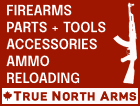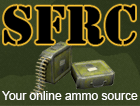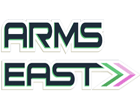https://www.shootingillustrated.com/...e-to-reloading
by Richard Mann - Monday, April 12, 2021
The Beginner's Guide to Reloading
Many shooters, particularly but not exclusively those new to the game, are apprehensive about reloading their own ammunition. Those considering the process have lots of questions, and most every question deserves the same “No and yes” answer. If you’re thinking about taking up reloading, here are the five most asked questions, with the “no and yes” answers explained.
Is it hard?
No. Loading ammunition is a simple process: You prepare the cartridge case, insert the primer, insert the powder and then the bullet. Reloading tools make each step simple.
Yes. Loading your own ammunition can be extremely complicated. Difficulty comes when trying to drastically improve accuracy, working with cartridges where you must handcraft the cartridge case or when loading wildcat cartridges for which there is no published data.
Loading your own ammunition requires patience and the ability to follow directions. If you’re the kind of person who cuts corners or never reads directions, it’s probably not for you. On the other hand, if you can successfully make edible, good-tasting brownies from a box or grill a steak to the proper temperature, you can probably become a handloader. A high degree of intelligence is not required, but measured consistency and adherence to established protocols are.
https://www.shootingillustrated.com/...55/reload1.jpg
Handloading ammunition
Handloading ammunition is an exercise in meticulous precision; everything from case length, die adjustment and powder fill needs to be checked and tweaked to ensure the production of high-quality ammunition.
A good loading manual will provide the basic information. In a matter of a few hours, you can go from nothing to a new cartridge. RCBS even offers an educational DVD on reloading. But, assembling ammunition that will safely go bang is one thing. Loading extremely consistent ammunition delivering the precise internal, external and terminal ballistics, along with reliable functionality in your firearms, can be more difficult.
You’ll need to understand how to translate reloading data to the actual assembly of components. You’ll also need to understand how to properly adjust your tools so they work smoothly to correctly assemble the recipe you’re following. Where the process can get complicated is when you’re trying to evaluate the data from a test session in order to adjust your recipe. Though not as hard as it sounds, it’s a learn-as-you-go exercise.
Experience, along with a few calls to the manufacturers of reloading components or reloading tools, will help guide you. Those manufacturers offer the best customer service you’ll find in the world of retail. They have trained professionals—folks who actually handload ammunition—manning the phones, and they’re happy to answer questions and help you work through problems.
Still, there’s no substitute for the consumption and understanding of a quality loading manual. Yeah, you can find guidance online in various forums, but be leery of any information not cross-referenced through a reliable source. Some who load their own ammunition consider themselves professional ballisticians and will spew out bad advice as often as politicians lie. Only follow data from manufacturers that make the tools and components you’re using.
Is it expensive?
No. Crafting your own ammunition can be done very affordably, especially if you only purchase the bare-minimum tools needed.
Yes. Depending on how involved you want to be, you can spend a lot of money. If you want to assemble a large volume of ammunition in a very short time, you’ll need specialized and expensive equipment. The same can be said for those who want to craft ammunition that will deliver the utmost level of precision.
One of the best ways to get started reloading your own ammunition is to purchase a reloading kit. Most kits, like the Rebel Master Reloading Kit from RCBS ($463), Lyman Brass-Smith Ideal Press Reloading Kit ($300) or the Dillon Essentials Square Deal B 9MM ($755), will contain just about everything you need—with the exception of dies and a shell holder—to get started.
Many who want to load mass quantities of ammunition make the mistake of purchasing a progressive press before they fully understand the reloading process. Sure, you can learn to load on a progressive press like the RCBS Pro Chucker 5 ($730) or a Dillon XL 750 ($593), but the learning curve is shorter with a single-stage press. You’ll also find a single-stage press is very handy to have around, even if you ultimately do most of your loading on a progressive.
One example of affordable versus expensive involves case preparation. A vibratory case tumbler/polisher is almost a must-have because it cleans the used brass you’ll pick up at the range. The RCBS unit retails for about $125 and will last for a long time, while the Hornady Magnum unit is also a great choice at $115. These devices use media like ground walnut shells or crushed and treated corn cobs to make your cases look new. A manual, hand-cranked tumbler like Lyman’s Rotary Case/Media Separator ($44) is a good idea to separate the media from the cases when you’re done polishing.
On the other hand, an ultrasonic case cleaner can cost more than twice as much. It will do an even better job and you won’t have to clean the media particles out of the primer pockets. Units are available from a variety of manufacturers, including Hornady’s popular Lock-N-Load models.
Another example is an electric case-prep unit. The RCBS Brass Boss will chamfer case necks, clean primer pockets and more, but it costs almost $200. The Dillon RT1500 is also a great option, but is likewise expensive at $375. Those individual hand tools, like the ones that come in the Rebel kit or Lyman’s Case Prep Multi-Tool ($33), can be purchased for much less, but the process will take you much longer and will involve a few hand cramps along the way.
Hornady’s Case Prep Duo won’t do everything, but will make things quicker and less painful than a manual tool and is a solid in-between option at $58. Dies matter, too. Standard rifle reloading dies cost between about $40 and $80 each, but precision, match-grade dies can cost two to three times as much as that.
None of this accounts for the current shortage in all things related to ammunition, which has resulted in scarcity and increased prices for reloading components like brass, primers and powder.
https://www.shootingillustrated.com/...56/reload2.jpg
ammo press
(l.) No matter the press you use, the process is the same; primer first, followed by the powder and bullet. (r.) When ammunition is in short supply, so too will be primers, powder and bullets.
Do I need a lot of tools?
No, generally all you’ll need are a loading press and loading dies, with a few other simple and inexpensive tools.
Yes. But, only if you’re going to extremes with regard to the amount or quality of the ammunition you want to create.
Like with the question about expense, a good, single-stage press kit is about all you need. However, let’s say you do not want to weigh out individual powder charges; this is a tedious process that is very slow. An electric powder measure like the RCBS ChargeMaster Combo can really speed things up and will even keep count of your loads, but it retails for a bit more than $400. A manual unit, like the Hornady Lock-N-Load Powder Measure ($85), will be much less expensive, but much slower, too.
A precision micrometer, like the Hornady Vernier Ball Micrometer ($80) is a great tool to help you set the exact overall cartridge length you desire when loading precision rifle ammunition, and an RCBS Case Master Gauging Tool ($151) will allow you to measure case neck and bullet run out, and even case-wall thickness. Neither is a mandatory tool, but each will help you load more consistent and accurate ammunition. I can’t imagine trying to load ammo capable of sub-MOA performance without either.
If you’re loading rifle cartridges, you’ll need a case trimmer to get the most loads out of every case, and it also helps with consistency. As brass cases are fired, they tend to lengthen and a trimmer allows you to return them to the correct length. A manual case trimmer like the RCBS TrimPro 2 retails for $134, but the company’s electric Universal Case Prep Center is much faster and much more expensive. Similar options are available from Dillon, Hornady and Lyman, among others.
Does it take a lot of time?
No. From a single-stage press you can load about 100 cartridges per hour. From a progressive press you can load about three times that many.
Yes. The actual loading of the ammunition does not take as much time as does the preparation of cases, researching of data and setting up of the tools needed.
When it comes to time, most do not consider the time involved in picking up brass, cleaning brass, inspecting brass and prepping brass. Regardless whether you’re working with a single-stage or progressive press, those are time-consuming elements of the process.
Finding the right load for your handgun or rifle also takes time; you’ll have to load a dozen or so rounds of each recipe you want to try, take them to range and then carefully evaluate the data from the shoot. Those 100 cartridges you can load in 1 hour on a single-stage press will probably have several hours of additional prep work behind them.
On the other hand, many take great pleasure in all aspects of reloading, and you may find the process relaxing and something to which you look forward. Maybe the best way to look at the time consideration is this: If you’re thinking about loading your own ammo, but you’re continually complaining you don’t have the time to do the things you like, reloading ammunition is probably not for you. If, however, you spend a lot of time twiddling your thumbs and wishing you had something to do, reloading could well be your salvation.
Rebel Master Reloading Kit
The best way to start loading your own ammunition is with a kit like this Rebel Master Reloading Kit from RCBS. It contains everything you need— with the exception of dies and a shell holder—to get started handloading.
Can I save money?
No. Most shooters will not see a substantial savings by loading their own ammunition. This is partly because you have to load a lot of ammo to recoup the initial investment and partly because when you consider the time required, reloading your own ammunition costs about the same as buying new, factory-produced ammunition.
Yes. You can save money if you do a lot of shooting, especially if you are an avid competitor in an action-shooting discipline.
Here’s the thing: Once you start loading your own ammunition, you realize that you can assemble 100 rounds cheaper than you can buy 100 rounds. This tends to result in you shooting 100 rounds a lot more often. So, yeah, your cost-per-round may drop but the amount of ammunition you fire might double or triple. The downside to loading your own ammo is that you’re not spending any less money; the upside is that you’re shooting a lot more. In the end, you may not be any richer, but you should be having more fun and shooting better.
Some also think if they load their own ammunition it will help them acquire ammo during ammunition shortages like we’re experiencing now. To an extent that’s true, but realize that when ammo is in short supply, so are the components. And, as with every ammo shortage of the past, we always see a spike in the cost of primers.
What else should I know?
Without question, the best way to learn to load your own ammunition is through a mentor. If you belong to a shooting club or range, reach out and find someone who is an experienced handloader and ask for help. They’ll have all to the tools required and can walk you through the process. And a mentor can be there to answer questions when you become confused or have problems.
By becoming a reloader, you will learn from the process and will not be as dependent on the retail availability of ammunition. It can also provide you with pride in craftsmanship. Loading ammo is a great way to spend a lazy, rainy and cold Sunday afternoon. Taking up reloading during an ammunition shortage is probably not the best time to realize its benefits, but it might be the best time to start, because you have the motivation to learn.
https://www.shootingillustrated.com/...58/reload4.jpg
reloading gear
After mastering the basics, you can eventually move up to a progressive loader like the (1.) Dillon XL 750 or (2.) Hornady Lock-N-Load AP.
(3.) An electric powder dispenser like this Gen6 Compact Touch Screen Powder System saves time, but is an expensive item.
(4.) There is no substitute for a good handloading manual, like this one from Speer. It’ll get plenty of use.
(5.) A shell holder might seem unimportant, but you cannot load ammo without one. Most cartridges will require a specific shell holder.
(6.) Hornady’s Magnum Digital Vibratory Tumbler is just one of the products available to simplify the polishing of brass.
(7.) Tools like the Hornady Vernier Ball Micro-meter help maintain the exactitude necessary for you to produce precision ammunition.
(8.) You will have to have a set of dies for every cartridge you intend to handload for. Two dies are generally required for rifles and three for pistols.
(9.) There is a wealth of resources available to the novice handloader, including this instructional DVD from RCBS.
(10.) A most critical aspect of reloading is using the correct powder charge. It must be weighed precisely.
(11.) Chamfering cases is part of the case-prep process and this hand-chamfering tool is affordable, but is also time-consuming to use.
(12.) There are tools that help with every aspect of reloading, as evidenced by the Lyman Rotary Case/Media Separator.
https://www.ssusa.org/articles/2021/5/11/reloading-on-a-budget-part-2-turning-brass-into-loaded-rounds
Reloading On A Budget Part 2: Turning Brass Into Loaded Rounds
by Chris Christian, Field Editor - Tuesday, May 11, 2021
Once cases are properly sized and belled the next step is priming. It’s a simple operation. But if military surplus cases are in the mix (whether rifle or pistol) an additional step is required.
Military cases normally use a crimped-in primer, and that crimp must be removed or a new primer will not seat. RCBS makes a simple and inexpensive primer pocket swaging tool to deal with this.
RCBS primer tool
Military surplus cases require the primer crimp to be removed before a new primer can be installed, and an inexpensive RCBS tool handles that chore easily.
There are a number of priming tools that will mount on a single-stage press. But I find that off-press priming is actually faster with the “batch” method. It’s more convenient to get the case in and out, and inspect it for proper seating.
There are a number of off-press priming tools. Some are squeeze-type hand primers that run in the $35 to $175 range. They work well, but can be a bit fatiguing—especially with some of the harder primers that require more “squeeze force.”
Properly seated primer
A properly seated primer will be slightly below flush. Without the opportunity for the reloader to ascertain that, “clicks” can happen. This is a critical step that new reloaders sometimes ignore.
Bench-mounted units will run from $25 to over $100. They do need to be firmly mounted, but it doesn’t have to be a permanent mount. With my Lee Auto Bench Prime (around $25 online, with caliber specific shell holders around $5 each) I drilled mounting holes into my reloading bench and bought some over length screws and wingnuts. That lets me install and remove it as needed. It’s quick, non-fatiguing and I can prime about 400 cases per hour.
The separate sizing, belling and priming operations don’t have to be a continuous evolution. Common 28-ounce plastic coffee cans are airtight, make excellent storage containers, and they’re easily labeled as to the contents. A couple of hours here and there can easily fill one with 1,000 (or more) sized, or belled or primed cases. When the primed case can gets filled, it takes little time to crank out a few hundred rounds for next weekend’s match.
Handgun cartridge loading block
Handgun cartridges can be quickly charged with a loading block and a fixed rotor charging tool. A quick pass with a small flashlight over the charging block will immediately reveal any double charges.
Powder charging is the next step, and that needs to be immediately followed by seating the bullet.
There are two types of powder charging tools—adjustable and fixed rotor. Adjustable powder measures, whether manual ($85 and up) or electric ($350 to $900), allow the shooter to adjust the measure to the desired powder charge. They can be effective when properly adjusted.
Fixed-rotor measures use marked interchangeable rotors with different volumes. The exact charge for each rotor will vary with different powders due to density. But once the charge for each rotor is determined they never go out of adjustment. If a shooter wants to fine-tune a load that is not thrown by a rotor, it’s a simple matter to take a rotor that’s slightly below the desired weight and open it up with a drill to get the specific charge desired.
Many powder charging systems can be mounted directly to the press—drop the charge and then seat the bullet. The drawback is verifying the charge. A missed or double charge can be a problem. My solution with single-stage press use is the same “batch processing” method I use to prep cases. With my RCBS Little Dandy powder measure I use loading blocks (available from many sources). It takes me 10 minutes to fill two 50-case blocks and charge them. A quick pass over the cases with a small flashlight will show a missed charge or double charge. After that, it’s easy to run them through the press and seat the bullets. With a taper crimp there’s one more pass through the press, but it doesn’t take long. With pre-prepped cases, I can crank out enough rounds for the next match in an hour.
The RCBS Little Dandy is designed for the small powder charges used for handguns. The larger powder charge required for rifle cartridges is best addressed with an adjustable measure such as the RCBS Uniflow. This can still be done off-press with an available powder measure stand. Double charges are obvious because they’ll overflow the case. Missed charges are equally obvious with a look into the case. Once confirmed, the bullet can be seated.
With either charging system, a scale is mandatory to confirm the exact charge weight being adjusted to, or thrown by a fixed rotor. Electric scales will run $140 to over $800. A simple magnetic balance beam scale will serve well and can be purchased for around $50 to $75.
A scale is mandatory for any reloader in order to confirm powder charges. A simple, inexpensive magnetic balance beam scale will perform that task well.
Finally, no new reloader should start without a reloading manual, like those from Speer, Lyman, Hornady and others. They do show load data, but that data is also available on every powder maker’s website. The biggest plus for the reloading manuals is that they provide an illustrated step-by-step guide through the reloading process. They can quickly turn a novice into a safe and competent reloader.
A new reloader opting for a single-stage press, off-press priming tool, either type of powder charger, an inexpensive tumbler, magnetic beam scale and some of the minor accessories mentioned above can—with careful online shopping—assemble an effective reloading kit for under $700.
The first 1,000 rounds loaded will pay for the reloading gear. After that, they can expect to reload practice and match handgun rounds for less than $12 per box of 50, while rifle rounds will run a bit more. But it’s still less than factory ammunition. And when properly assembled, it’s just as good. It really doesn’t take big bucks to save big on ammunition.
|









 Reply With Quote
Reply With Quote


